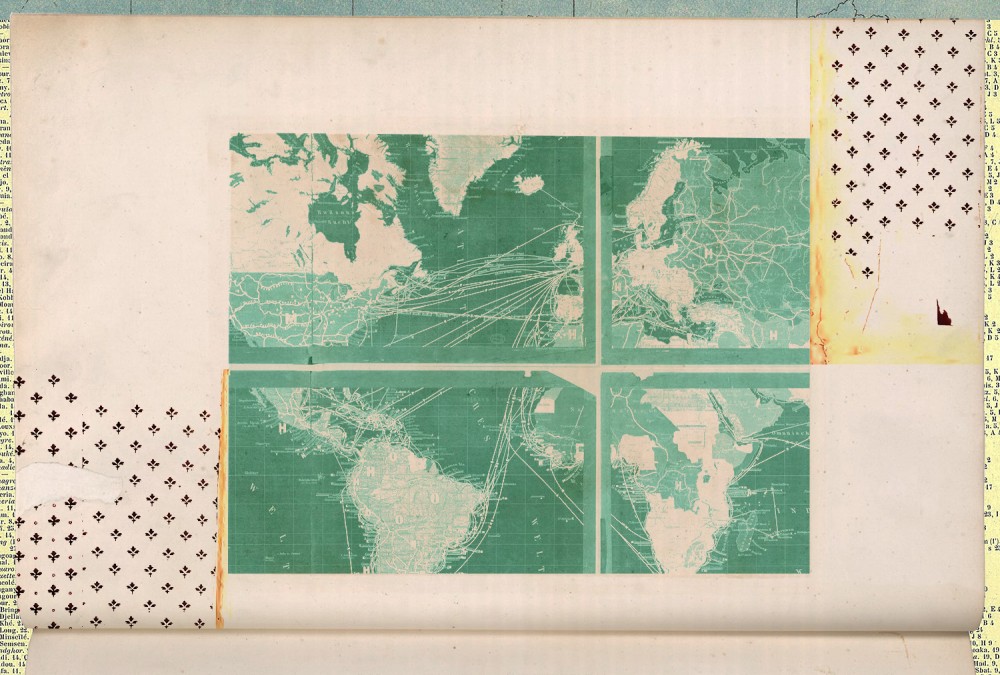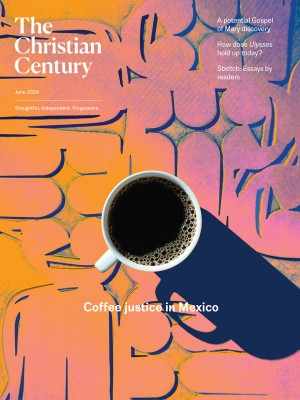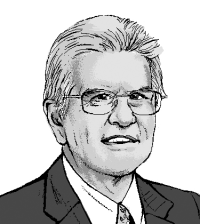
(Century illustration)
I have been hunting ghosts. Thomas Hobbes wrote in 1651 that “the Papacy is no other than the ghost of the deceased Roman Empire, sitting crowned upon the grave thereof: for so did the Papacy start up on a sudden out of the ruins of that heathen power.” While I have long known this quote, only recently did I learn of the larger context of what initially seems like a cheap interfaith potshot. Hobbes really pursues the analogy in some detail and makes some good points. More to the point, his comments apply to the wider influence of empires on all the world’s faiths, not just Christianity.
Many factors drive the success or failure of religious movements, including demography and climate factors, but the world’s religious history can scarcely be understood except in reference to imperial realities and their stubborn survivals (hence my new book Kingdoms of This World: How Empires Have Made and Remade Religions). However often, and however rightly, we denounce the evils associated with empires—their links to racism and slavery, exploitation and colonialism—empires have also supplied the means by which religions have achieved global scale.
Read our latest issue or browse back issues.
A map of modern Christian populations worldwide is stalked by multiple imperial ghosts. The great centers owe their origins to various Christian empires over the past half millennium: the Spanish, Portuguese, French, Belgian, British, and others. Within those empires, many people moved voluntarily, as settlers and colonists. Others were conquered or enslaved and had a new religious system imposed upon them, although over time many conquered peoples made the religion their own.
This is the story of how a religion that in 1500 was overwhelmingly Europe-centered became by the end of the millennium a vast transcontinental enterprise. The world’s largest Roman Catholic communities today are in Brazil, Mexico, and the Philippines, recalling the influence of the long-defunct empires of Spain and Portugal. The Anglican Communion, with 90 million believers worldwide, retains the unmistakable imprint of the old British Empire. In each case, survivals are evident in the political traditions and structures of the respective religions, in their languages and forms of communication.
In the hierarchy of the Orthodox Christian world, the ecumenical patriarch of Constantinople is still first among equals. He is based in a city that retains the aura of the New Rome founded by the Roman emperor Constantine in the fourth century: the present incumbent is the 270th to hold the see. Even today, after so much turmoil and persecution, the lands of the former Russian Empire still account for some 75 percent of the world’s Orthodox believers.
Beyond Christianity, the history of Buddhism is a story of patronage by successive imperial regimes. In turn, the story of Buddhist decline in its ancient Indian heartlands can only be told in terms of shifting imperial fortunes. Islam, Hinduism, and Shinto all bear imperial brands.
Obviously, this is no mere case of humble subjects faithfully following the spiritual whims of each would-be world ruler. In some cases, religions grew and spread despite the violent opposition of the imperial regimes that exercised political control over given territories; Christianity in the Roman world is the obvious example. Time and again, we witness the unintended consequences of imperial decisions and edicts.
What mattered was less the official attitude of any particular empire than the conditions those entities created to maintain their rule. These included efficient means of communication by land and sea, new trade routes, and the cities that grew from them, which became entrepôts for commodities and ideas. Also playing their part were the widespread military establishments that defended imperial frontiers. These maintained public order and suppressed threats to travel and trade.
Of their nature, empires brought together different peoples and ethnic groups who otherwise would have remained ignorant of each other’s existence; empires do an excellent job of moving subjects, often against their will. They move faith communities from one part of the world to another while removing or exiling older populations. To use a concept now popular in political analysis, empires turned communities of locally rooted Somewheres into highly mobile Anywheres, with all that implied for values and ideology.
Crucially, the new imperial orders promoted shared languages of communication and often a degree of literacy. As Hobbes remarked of the Catholic hierarchy, “the language also which they use, both in the churches and in their public acts, being Latin, which is not commonly used by any nation now in the world, what is it but the ghost of the old Roman language?”
Beyond extending the boundaries of faiths, that imperial context transformed the ideas that were communicated, as religions restructured their messages for a new and larger world. Hobbes’s remarks on the papacy represent just one example of a religious institution appropriating imperial ideology and iconography.
In some cases, empires favored and promoted religious communities, while in others, populations and faiths were conditioned by reactions against intruding foreign powers, by “empire shock.” Much of modern Islamic history can be written in terms of the response to European imperial advances across Asia and Africa. Modern political Islamism grew out of attempts over the past century to reconstruct the faith to respond to those successive traumas. Judaism, too, has been reshaped by encounters with successive imperial frameworks, whether benevolent or hostile. Anyone who has ever opened a Bible has access to a superb manual of the history of empire and the diverse reactions of subject peoples toward their rulers over several centuries.
Whatever the wishes of any given regime, it was these essential qualities of empire—this empire-ness—that allowed the rise and circulation of religious traditions and beliefs. As in the case of Rome, many of those features persisted after the formal regimes were destroyed, leaving behind only phantoms, but very potent ones. Imperial memories die hard, often astonishingly so.
Empires are an inescapable component in the making, remaking, and rethinking of the world’s faiths. Do you want to understand those religions? Then understand empires.






